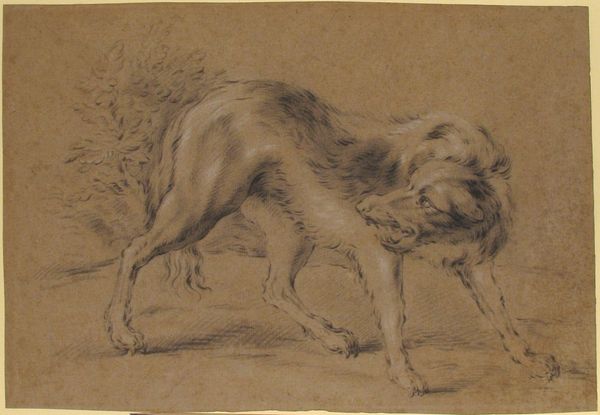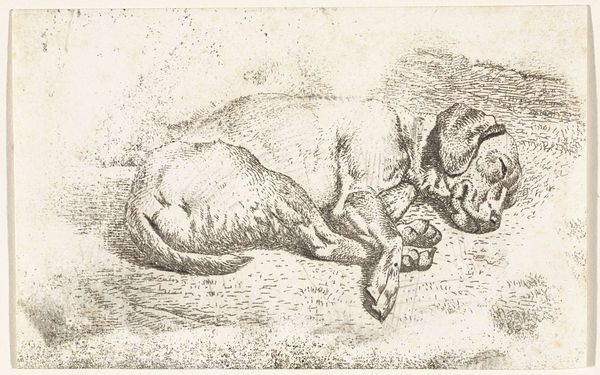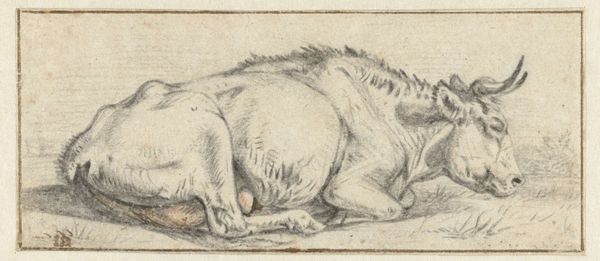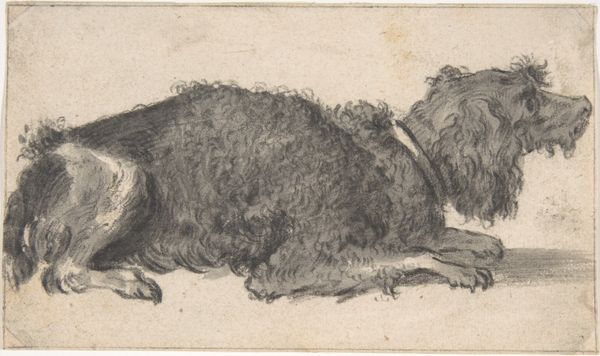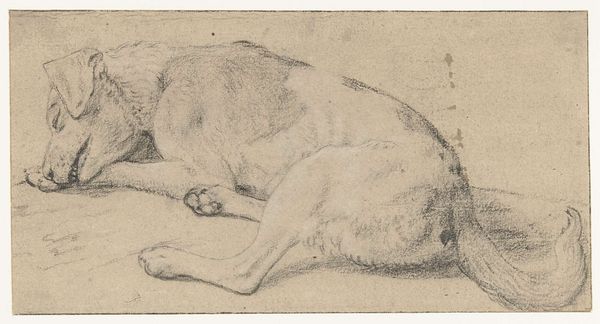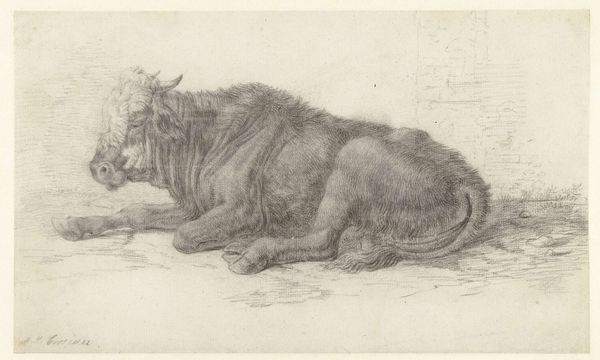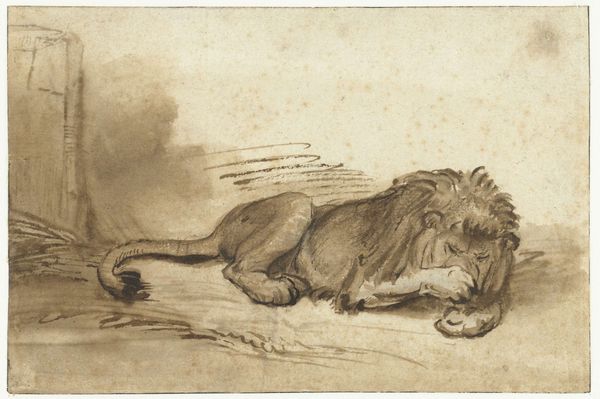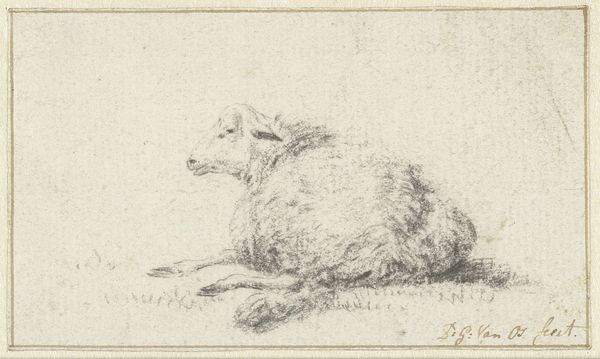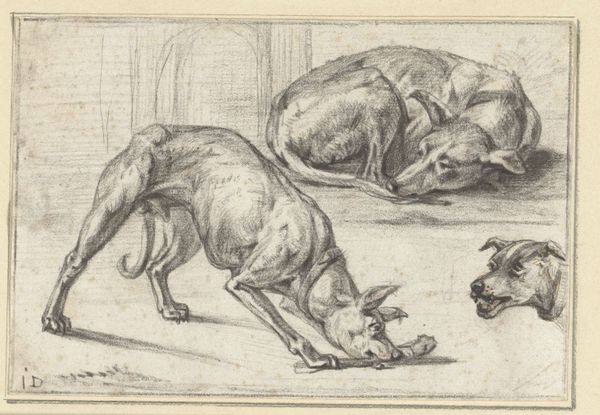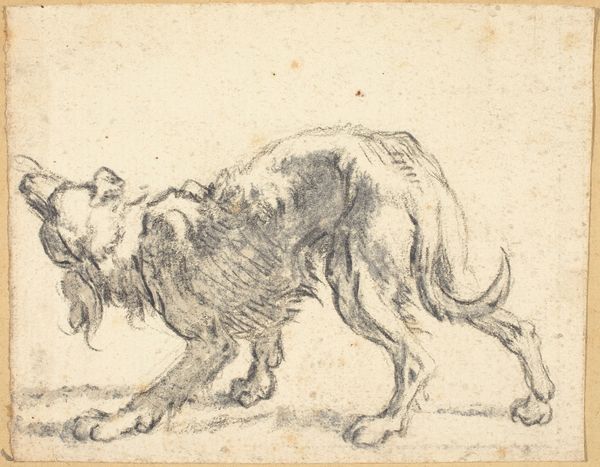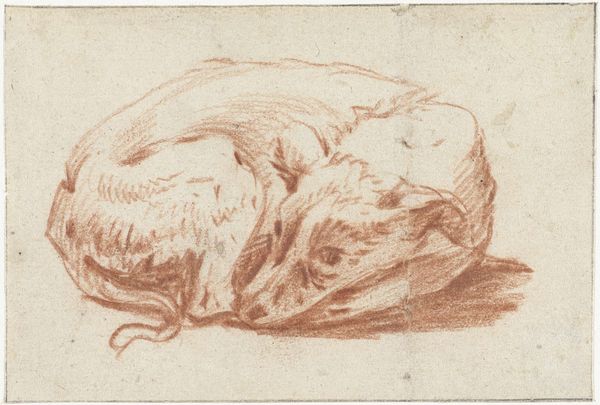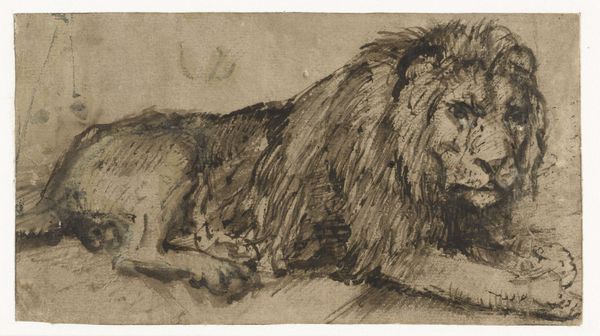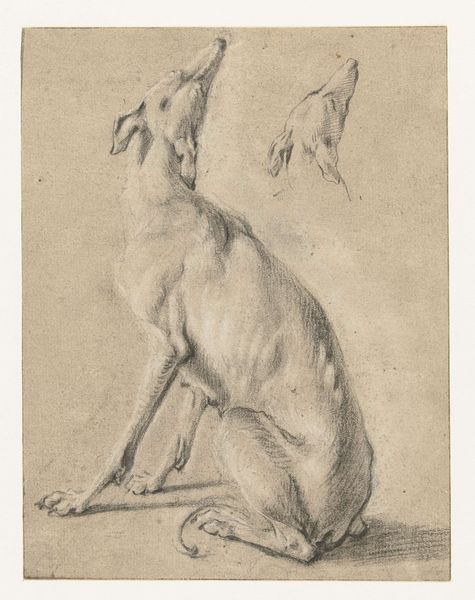
drawing, charcoal
#
drawing
#
baroque
#
animal
#
landscape
#
charcoal drawing
#
figuration
#
charcoal art
#
charcoal
#
realism
Dimensions: height 80 mm, width 172 mm
Copyright: Rijks Museum: Open Domain
Curator: Immediately, the heaviness strikes me. That weight, brilliantly conveyed through these layered charcoal strokes... it’s as though I can feel the lion’s slumber. Editor: Indeed. Here we have Rembrandt van Rijn’s “Study of a Lion Asleep,” likely created sometime after 1650. It's currently held at the Rijksmuseum. What fascinates me is the potential socio-political context: the Dutch Republic's colonial enterprises, the exoticization of the animal kingdom for European audiences, and Rembrandt’s place as a participant or commentator on these themes. Curator: Yes, the "exotic." Yet I'm drawn to the labor itself. Look at the cross-hatching, the economy of line to suggest fur, muscle, bone…It reveals a deep, sustained observation but done with incredibly fast, deliberate marks. Did he sketch this from life? And what sort of market was there for animal studies, beyond pure scientific observation at this point? Editor: I wonder about that "from life" aspect too. Perhaps this study, while appearing straightforward, is laden with symbolism tied to power, conquest, and even religious metaphors associating lions with royalty or divine strength – ideologies underpinning colonial ventures. It reflects humanity's dominion over the natural world but also humanity's exploitative behavior. What about the production of materials; the sourcing, sale, and exploitation within charcoal production in seventeenth-century Europe? It begs exploration! Curator: Right, to examine both what and how. Even in a preparatory sketch, there's that exchange with his patron. Knowing that it was made by human hands – this charcoal dragged across this paper – reveals so much about our human-animal interactions. We must see its materiality: what is made, but who made it? How does production and materials alter or comment upon a simple depiction? Editor: The sketch acts as a powerful reminder. This seemingly simple depiction echoes across histories and cultures—touching colonialism, exoticism, social hierarchies. What began as a study now provokes consideration about our complex global identity today! Curator: Absolutely! It makes you consider all those embedded artistic and exploitative human relations across time and space! Editor: Precisely, reminding us that even in a seemingly still or settled piece like "Study of a Lion Asleep" narratives around power, labor, identity, and place continue to awaken.
Comments
No comments
Be the first to comment and join the conversation on the ultimate creative platform.
